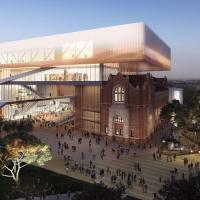The Museum’s History department was established in 1970 – the first history department in a state museum in Australia.
The History department specialises in developing collections reflecting the material life of Western Australians, and researching the story of the people and places in Western Australia in all its diversity.
The History department’s collections include material acquired by the Museum since the 1890s, some of which came from much earlier collections such as that of the Swan River Mechanics Institute. It has been shaped by the different approaches and priorities given to collecting over the years.
Older collections were influenced by more general interests, this emphasis contrasts sharply with collecting strategies over recent decades which have been underpinned by historical themes.
The collections are dynamic, growing both through donations and through targeted acquisitions in response to the Museum’s current exhibition projects. Knowledge about the material in the collection is also changing and improving as historical research reveals more information.
The History department’s collections consist of around 100,000 items, the majority of which acquired by donation, and ranges from hatpins to traction engines.
Collection items include historical vehicles, agricultural equipment, costumes and textiles, furniture, arms and military history, numismatics and philately. It features collections reflecting the early Swan River Colony, convictism, Indigenous life, the story of migration, making-do, working life including gold mining history, the Arnott, Mills and Ware Cake and Biscuit Factory, domestic work, office work and various trades, as well as a significant collection of trade union banners. In 2009 the History department acquired the Edith Cowan University Museum of Childhood Collection, the most significant collection of childhood material culture in Australia. More information about some of the more interesting artefacts can be found in the History department’s collection highlights.
Data and Resources
- Dywer and Mackaycsv
J.J. Dwyer came to Kalgoorlie in the late 1800s with a dream of opening his...
Preview Download
Dataset Info
These fields are compatible with DCAT, an RDF vocabulary designed to facilitate interoperability between data catalogs published on the Web.| Field | Value |
|---|---|
| Publisher | |
| Modified Date | 2017-06-09 |
| Release Date | 2017-06-09 |
| Identifier | b9af8250-ef64-4180-9347-822c776cb71b |
| Spatial / Geographical Coverage Area | POLYGON ((111.533203125 -36.0602014124, 111.533203125 -12.7609103405, 129.0234375 -12.7609103405, 129.0234375 -36.0602014124)) |
| Spatial / Geographical Coverage Location | Western Australia |
| License | |
| Public Access Level | Public |


![[Open Data]](https://assets.okfn.org/images/ok_buttons/od_80x15_blue.png)